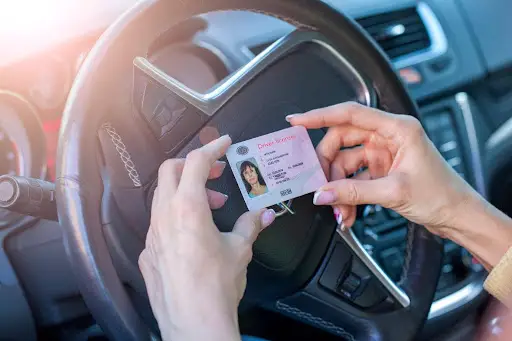In 2022, California saw 10,597 motorcycle accidents, causing 8,632 injuries and 532 fatalities. The majority of victims were male riders, unveiling a sobering aspect of the state’s road safety. These statistics underline the need for a closer examination of factors contributing to these incidents, urging a focused effort to enhance safety measures for all road users, especially in places like Bakersfield, where the number is rising every day.
Tackling the issue head-on, it is crucial to promote safe motorcycle practices, prevent accidents, and save individuals from any type of motorcycle injury. Education campaigns on defensive riding, using proper gear, and being aware of blind spots can make a big difference. Encouraging riders to undergo training and regularly update their skills is key. Additionally, advocating for better roads and including safety measures for motorcycles can create a safer environment.
Gear Up for Safety
One crucial aspect of motorcycle safety is wearing the proper gear. This includes a helmet approved by the Department of Transportation (DOT), boots that cover the ankles, durable pants, a jacket with reflective materials, and gloves to safeguard your hands.
When it comes to helmets, many riders opt for full-face helmets as they offer protection for the head and face in case of an accident. It’s advisable to invest in top-quality gear designed specifically for motorcycle riding as they come equipped with safety features.
Stay Alert and Avoid Distractions
Maintaining control of your motorcycle requires staying alert and focused while riding. Distracted driving has become an issue on our roads today; hence, using devices like smartphones should be avoided completely when riding. Furthermore, it is advisable to engage in activities, like eating or grooming, during designated breaks rather than while on the move. Riders should always focus on the road ahead and be proactive in anticipating hazards.
Upper-Body Techniques: Ensuring Proper Riding Posture
Maintaining the upper body posture while riding is crucial not only for comfort but also for maintaining control over the motorcycle. Incorrect posture can lead to fatigue and decreased maneuverability, thereby increasing the risk of accidents.
1. Choose a seat position that allows your feet to comfortably reach the pedals.
2. Hold onto the handlebars securely without gripping.
3. Position your elbows at an angle that feels natural when turning or performing maneuvers.
4. Engage your core muscles to stabilize your body and absorb shocks when riding over terrain.
5. Regularly adjust your posture to avoid discomfort or pain from riding.
By adopting and sustaining a riding posture, riders can enhance their control over their motorcycles, reducing the chances of accidents.
Lower Body Techniques: Mastering Braking and Cornering
Accidents often happen when riders lack proficiency in braking or cornering maneuvers.
To improve these skills:
1. Practice applying the brakes gradually and progressively to prevent skidding or losing control of your motorcycle.
2. Master advanced braking methods, like using rear brakes for optimal stopping power.
3. When approaching a curve, employ countersteering techniques by pushing on the handlebar in your intended direction to smoothly initiate turning.
Mastering these lower body skills will significantly enhance your ability to navigate turns safely and respond promptly in emergency situations.
Adopt a Defensive Riding Approach and Anticipate Dangers
Motorcycle riders face vulnerability on the road compared to drivers of other vehicles. Hence, it’s vital to embrace a riding approach that prioritizes safety. By anticipating hazards and being prepared for them, riders can effectively reduce risks.
Key defensive riding strategies include:
1. Maintain a following distance from vehicles to allow ample reaction time in case of sudden stops or maneuvers.
2. Enhance visibility by positioning yourself in lanes using beams as needed and wearing bright-colored or reflective clothing.
3. Continuously scan the road ahead. Check mirrors regularly to stay aware of surrounding traffic conditions.
4. Predict the actions of drivers based on their behavior, turn signals, and interactions with fellow motorists.
5. For safe overtaking, always check blind spots and use turn signals to communicate your intention to other road users. Timing is crucial; ensure there’s ample space, and be mindful of the vehicle’s speed you’re overtaking.
By having a defensive mindset and staying alert to dangers, motorcyclists proactively safeguard themselves from accidents caused by limited visibility or misinterpreting the intentions of other vehicles.
Continuous Learning: Rider Training Courses
Motorcycle riders can gain insights by enrolling in advanced rider training programs. These courses not only review riding skills but also offer additional knowledge and techniques to bolster safety on the streets.
Advanced rider training typically covers topics like handling emergencies, employing riding tactics, and understanding group riding etiquette. By dedicating time to enhancing their skills through these courses, riders show their dedication to safety and contribute to a more secure riding community.
Conclusion
Promoting safe motorcycle practices is vital in reducing accidents on our roads. By emphasizing the use of safety equipment, maintaining focus while steering clear of distractions, mastering body techniques, adopting defensive approaches, and continuously refining their skills through training programs, riders can help create a safer and more enjoyable experience for themselves and fellow motorcycle enthusiasts. The commitment to upholding high safety standards is sure to enhance the riding experience while lowering the chances of accidents on the road.
- Unshare workbook is greyed out Excel 2016?? - April 18, 2024
- Something went wrong, and Outlook couldn’t set up your account , but the problem persists - April 18, 2024
- how do I save clip art as picture? - April 18, 2024

